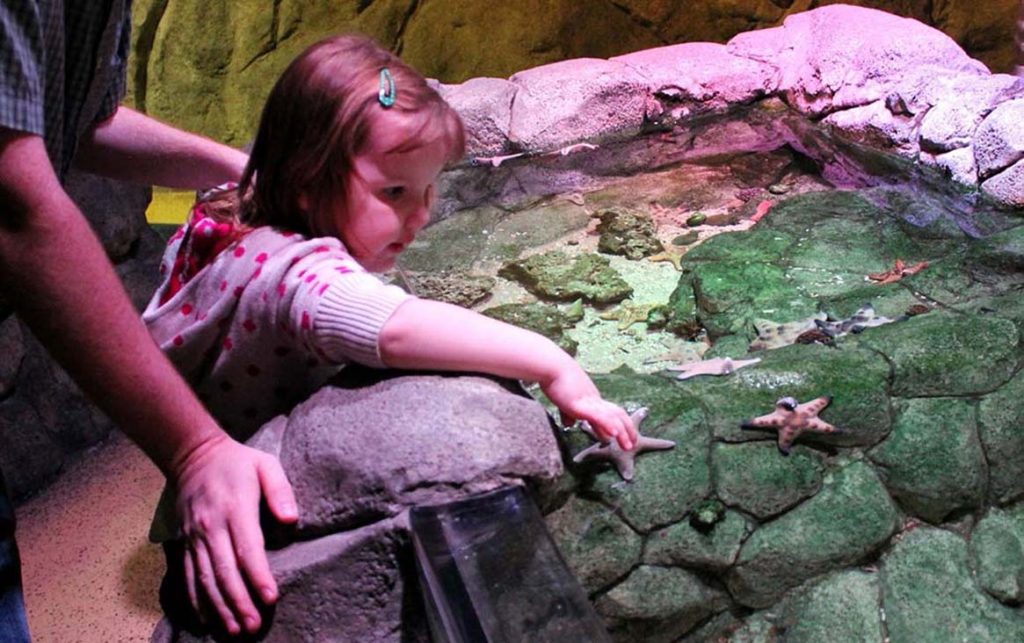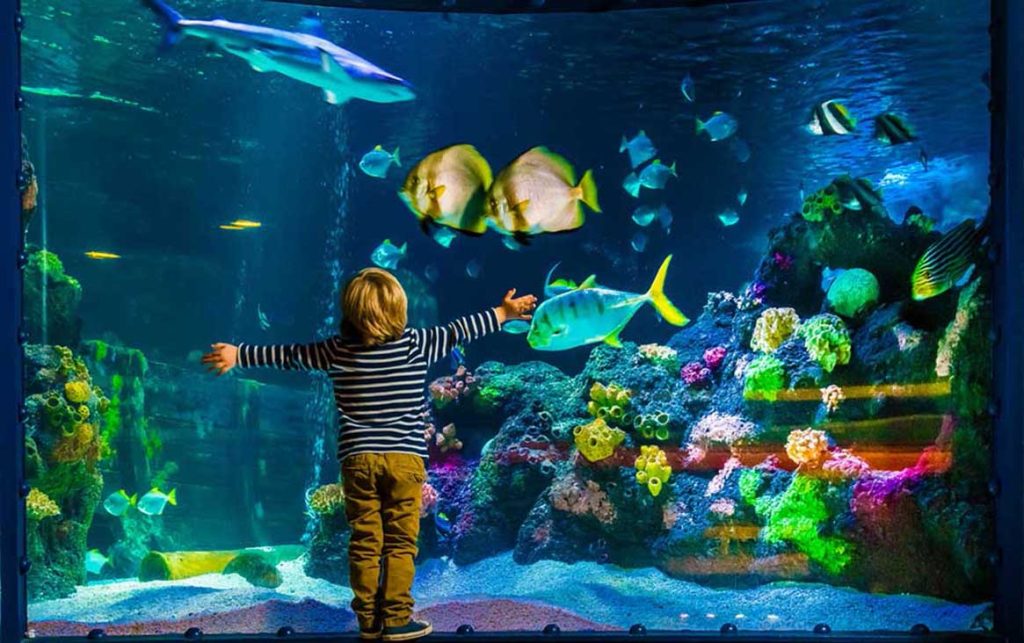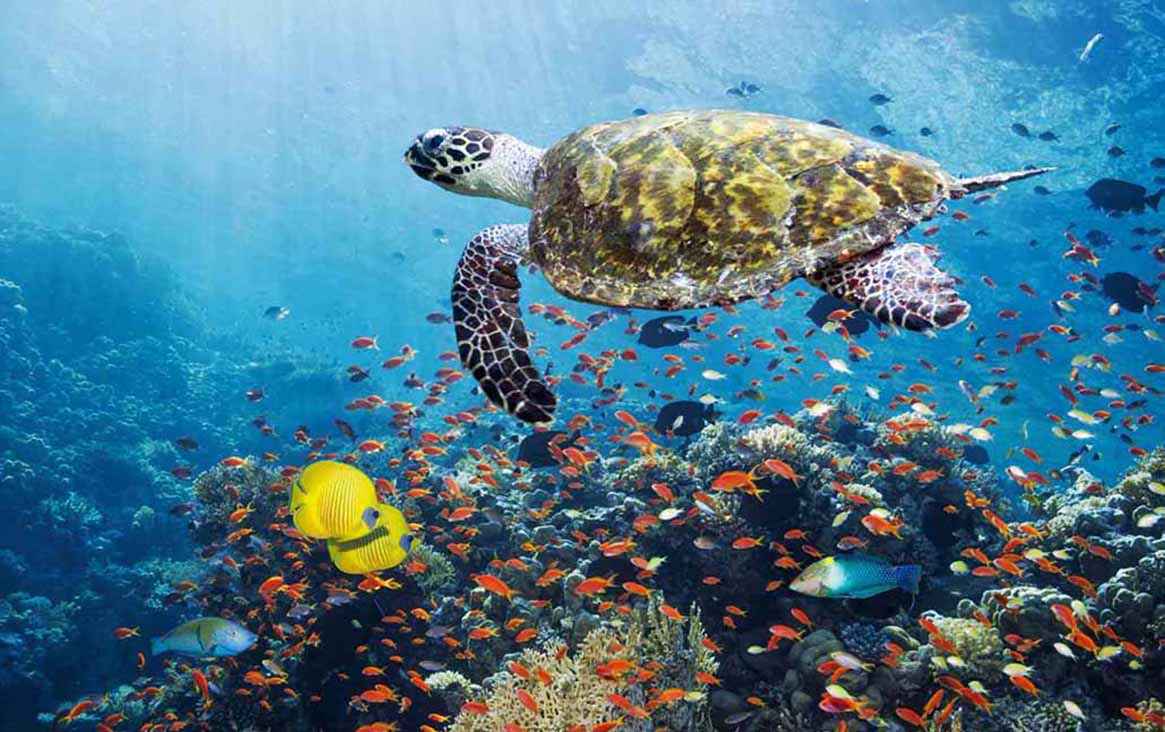The moment you step into SEA LIFE Aquarium, it feels like entering another world. Soft, layered lighting reflects through the water tanks, casting waves of blue across the walls and ceilings, creating the illusion of being deep underwater. The air is filled with the delighted exclamations of children, their voices full of genuine curiosity and joy—a contagious atmosphere that draws everyone in.
SEA LIFE is more than just an aquarium; it’s a vibrant “ocean school” where marine knowledge, ecological awareness, and interactive experiences come together in an immersive space. Whether you’re a child, parent, teacher, or traveler, you’ll discover a whole new way of learning and connecting with the ocean.
1. A Magical Entrance: From City Life to the Ocean Depths
Right at the entrance of SEA LIFE, a tunnel-like corridor greets you with textured walls mimicking underwater rock formations. On one side, massive screens showcase mesmerizing visuals of deep-sea creatures. Jellyfish drift slowly across the display, their bioluminescent bodies glowing like stars, instantly capturing everyone’s attention. The usual chatter of children gives way to awed silence as they press their faces close to the screen and ask, “What fish is that?” “Does it glow for real?”
This is what makes SEA LIFE so compelling. It’s not a place you just look at—it’s a full-body exploration of the ocean. Every corner tells a story, every setup teaches something. The learning begins quietly, almost subconsciously, the moment you walk through the door.
2. Thoughtfully Divided Zones: Knowledge Built Step by Step
SEA LIFE is thoughtfully divided into several themed zones, each one designed like a complete lesson. For example, in the “Tropical Rainforest Zone,” visitors discover the ecological richness of the Amazon River. You’ll see vibrantly colored arowanas, playful electric eels, and even some endangered species rarely found in the wild. Information panels explain their habitats and the role they play in both local ecosystems and human life.
The “Coral Reef Zone” is another crowd favorite. Visitors find themselves immersed in a colorful underwater garden filled with clownfish, sea anemones, and sea stars. One of the highlights here is the “Microscopic Coral Interactive Station,” where children can look through magnifying displays to observe the structure of coral polyps. For many, this is the first time they learn that corals aren’t plants, but colonies of tiny animals.
Each area in SEA LIFE features multimedia learning stations and interactive displays. These not only introduce each animal, but also encourage deeper thinking about the relationships between species and their environments.
3. Up-Close Encounters: From Watching to Touching

One of the most thrilling parts of SEA LIFE is the “Touch Pool” zone. These shallow, supervised tanks allow children to gently touch sea stars, sea urchins, and even shark eggs under the guidance of trained staff.
A seven-year-old girl cautiously reaches into the water and touches a slowly crawling sea star. Her eyes widen, a big smile forming on her face. “Does it feel pain?” she asks. A staff member explains gently, “They’re not very sensitive to touch, but we still treat them kindly—like friends.” That one moment teaches more than any textbook could.
SEA LIFE understands that true learning comes from hands-on experience. Beyond simply watching, children are encouraged to engage through touch, play, questions, and group discussions. These interactions lead to deep, lasting understanding.
4. School Trips: Immersive Ocean Classrooms
Many schools choose SEA LIFE for their educational field trips, not just because of its facilities, but because of the well-designed, age-appropriate learning programs. SEA LIFE offers customizable learning packages for school groups, including guided tours, themed lectures, activity booklets, educational games, and team-based challenges, making each visit a comprehensive learning experience.
In the “Ocean Classroom,” children sit surrounded by giant aquariums as marine biologists give engaging talks. Using simple language and real examples, they explain how sharks evolved, how sea turtles navigate, and why coral reefs are bleaching. Classrooms become living spaces for exploration, surrounded by the very animals being discussed.
Many teachers say their students look forward to SEA LIFE visits more than anything else during the semester. Here, learning becomes vivid, colorful, and truly exciting.
5. Education Meets Conservation: Values That Stick
SEA LIFE goes beyond displaying marine life—it also actively promotes environmental awareness. In the “Plastic Crisis” exhibit, a giant sea turtle sculpture made from discarded plastic bottles draws immediate attention. Nearby screens tell the story of a real turtle injured by a plastic bag mistaken for food. These stories aren’t meant to create guilt, but to help children understand the real-world consequences of pollution.
Many parents report that after visiting SEA LIFE, their kids start changing their habits—using fewer plastic straws, stopping littering, and even encouraging others to protect the environment. This transformation doesn’t come from forced lessons, but from immersive experiences that quietly reshape perspectives.
In another area, SEA LIFE highlights its global conservation efforts: releasing endangered turtles, cultivating artificial coral reefs, and cleaning up marine waste. These actions show visitors that ocean protection is not a distant concept—it’s something everyone can join.
6. A Family-Friendly Destination: Fun and Learning for All Ages

SEA LIFE is a perfect destination for family outings. Children of all ages can find activities suited to them. For toddlers, it’s a fantasy land filled with swimming creatures and dreamy lighting. Older kids, on the other hand, discover a living encyclopedia full of science, facts, and inspiration for future careers.
Parents often find themselves learning too. Many are surprised: “Stingrays have eyes on their undersides?” “Sharks grow new teeth continuously?” These fascinating facts spark lively conversations and make the trip enjoyable for all.
SEA LIFE also offers family-friendly amenities: nursing rooms, kids’ dining areas, and stroller rentals. Recognizing children’s changing energy levels, the venue includes rest areas and interactive play stations along the route to maintain a balance between activity and relaxation.
7. Multilingual Support: A Global Platform for Learning
SEA LIFE’s multilingual guides make it accessible to international visitors. In addition to Chinese and English, some SEA LIFE locations offer Japanese, Korean, French, and other language options via audio guides or written materials, ensuring everyone enjoys a full experience.
This inclusivity is ideal for international school trips or expat families. Every child, no matter where they come from, can engage equally and meaningfully with the wonders of marine life.
8. Extending the Experience: Bringing the Ocean Home
The SEA LIFE experience doesn’t end when you leave. Many children stay engaged long after, flipping through their photos, searching for more marine facts, or even imitating the guides’ educational storytelling at home. In the gift shop, eco-friendly toys, books, puzzles, and science kits allow families to take a bit of the adventure home.
On the SEA LIFE official website, a treasure trove of learning resources awaits: virtual tours, interactive games, and global eco-projects that kids and parents can join together. This seamless link between on-site and online makes each visit not just a memory, but a spark that ignites lifelong curiosity.



